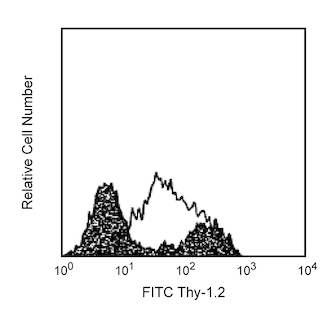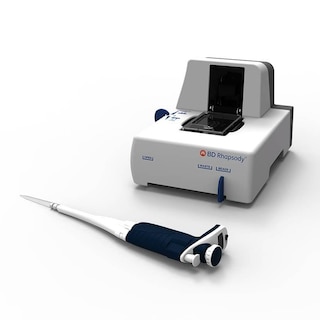-
Reagents
- Flow Cytometry Reagents
-
Western Blotting and Molecular Reagents
- Immunoassay Reagents
-
Single-Cell Multiomics Reagents
- BD® OMICS-Guard Sample Preservation Buffer
- BD® AbSeq Assay
- BD® Single-Cell Multiplexing Kit
- BD Rhapsody™ ATAC-Seq Assays
- BD Rhapsody™ Whole Transcriptome Analysis (WTA) Amplification Kit
- BD Rhapsody™ TCR/BCR Next Multiomic Assays
- BD Rhapsody™ Targeted mRNA Kits
- BD Rhapsody™ Accessory Kits
- BD® OMICS-One Protein Panels
-
Functional Assays
-
Microscopy and Imaging Reagents
-
Cell Preparation and Separation Reagents
-
- BD® OMICS-Guard Sample Preservation Buffer
- BD® AbSeq Assay
- BD® Single-Cell Multiplexing Kit
- BD Rhapsody™ ATAC-Seq Assays
- BD Rhapsody™ Whole Transcriptome Analysis (WTA) Amplification Kit
- BD Rhapsody™ TCR/BCR Next Multiomic Assays
- BD Rhapsody™ Targeted mRNA Kits
- BD Rhapsody™ Accessory Kits
- BD® OMICS-One Protein Panels
- Belgium (English)
-
Change country/language
Old Browser
This page has been recently translated and is available in French now.
Looks like you're visiting us from United States.
Would you like to stay on the current country site or be switched to your country?
BD™ AbSeq Oligo Hamster Anti-Mouse CD30
Clone mCD30.1 (also known as 2SH12-5F-2D) (RUO)


Regulatory Status Legend
Any use of products other than the permitted use without the express written authorization of Becton, Dickinson and Company is strictly prohibited.
Preparation And Storage
Recommended Assay Procedures
Put all BD® AbSeq Reagents to be pooled into a Latch Rack for 500 µL Tubes (Thermo Fisher Scientific Cat. No. 4900). Arrange the tubes so that they can be easily uncapped and re-capped with an 8-Channel Screw Cap Tube Capper (Thermo Fisher Scientific Cat. No. 4105MAT) and the reagents aliquoted with a multi-channel pipette.
BD® AbSeq tubes should be centrifuged for ≥ 30 seconds at 400 × g to ensure removal of any content in the cap/tube threads prior to the first opening.
Product Notices
- This reagent has been pre-diluted for use at the recommended volume per test. Typical use is 2 µl for 1 × 10^6 cells in a 200-µl staining reaction.
- Source of all serum proteins is from USDA inspected abattoirs located in the United States.
- Caution: Sodium azide yields highly toxic hydrazoic acid under acidic conditions. Dilute azide compounds in running water before discarding to avoid accumulation of potentially explosive deposits in plumbing.
- The production process underwent stringent testing and validation to assure that it generates a high-quality conjugate with consistent performance and specific binding activity. However, verification testing has not been performed on all conjugate lots.
- Illumina is a trademark of Illumina, Inc.
- Please refer to http://regdocs.bd.com to access safety data sheets (SDS).
- Although hamster immunoglobulin isotypes have not been well defined, BD Biosciences Pharmingen has grouped Armenian and Syrian hamster IgG monoclonal antibodies according to their reactivity with a panel of mouse anti-hamster IgG mAbs. A table of the hamster IgG groups, Reactivity of Mouse Anti-Hamster Ig mAbs, may be viewed at http://www.bdbiosciences.com/documents/hamster_chart_11x17.pdf.
- Please refer to bd.com/genomics-resources for technical protocols.
- For U.S. patents that may apply, see bd.com/patents.
Data Sheets
Companion Products






The mCD30.1 monoclonal antibody specifically recognizes CD30. CD30 is also known as Tumor necrosis factor receptor superfamily, member 8 (Tnfrsf8). The CD30 molecule is predominantly expressed by activated T lymphocytes, with its expression peaking at day 4-5 on spleen cells activated with plate-bound anti-CD3e antibody. The mCD30.1 antibody reacts with a majority of CD8+ T cells, as well as some CD4+ T cells in these cultures. Expression of CD30 on activated T lymphocytes is regulated by CD28 and cytokines. Its TNF-superfamily ligand, CD30L or CD153, is also expressed on activated T lymphocytes. By northern blot analysis, mouse Cd30 mRNA is detected in the thymus and in 72-hour pokeweed mitogen- and Con A-activated spleen cells, but not in the lung, brain, kidney, liver, bone marrow, unactivated spleen, or 72-hour LPS-activated splenocytes.1 It has also been reported that CD30 is expressed on naive B lymphocytes, it is not detectable after activation, and it starts to return after 72 hours following activation. Reports suggest that signaling through the CD30 molecule may be important in cytokine production by CD8+ CTL lines and may play a role in the regulation of Th1 and Th2 cytokine secretion by CD4+ and CD8+ T cells. It has also been proposed that CD30 plays an important role in the negative selection of thymocytes and protects against autoimmunity. Members of the TNFR family and their ligands are involved in the induction of diverse biological responses in lymphocytes, including differentiation, proliferation, and cellular death. In humans, CD30 was initially identified in Hodgkin and Reed-Sternberg cells in Hodgkin's disease patients and subsequently was found on neoplastic cells of certain types of non-Hodgkin's lymphomas.
Development References (12)
-
Amakawa R, Hakem A, Kundig TM, et al. Impaired negative selection of T cells in Hodgkin's disease antigen CD30-deficient mice. Cell. 1996; 84(4):551-562. (Biology). View Reference
-
Bowen MA, Lee RK, Miragliotta G, Nam SY, Podack ER. Structure and expression of murine CD30 and its role in cytokine production. J Immunol. 1996; 156(2):442-449. (Immunogen). View Reference
-
Chiarle R, Podda A, Prolla G, Podack ER, Thorbecke GJ, Inghirami G. CD30 overexpression enhances negative selection in the thymus and mediates programmed cell death via a Bcl-2-sensitive pathway. J Immunol. 1999; 163(1):194-205. (Biology). View Reference
-
Cosman D. A family of ligands for the TNF receptor superfamily. Stem Cells. 1994; 12(5):440-455. (Biology). View Reference
-
DeYoung AL, Duramad O, Winoto A. The TNF receptor family member CD30 is not essential for negative selection. J Immunol. 2000; 165(11):6170-6173. (Biology). View Reference
-
Falini B, Pileri S, Pizzolo G, et al. CD30 (Ki-1) molecule: a new cytokine receptor of the tumor necrosis factor receptor superfamily as a tool for diagnosis and immunotherapy. Blood. 1995; 85(1):1-14. (Biology). View Reference
-
Gilfillan MC, Noel PJ, Podack ER, Reiner SL, Thompson CB. Expression of the costimulatory receptor CD30 is regulated by both CD28 and cytokines. J Immunol. 1998; 160(5):2180-2187. (Biology). View Reference
-
Heath WR, Kurts C, Caminschi I, Carbone FR, Miller JF. CD30 prevents T-cell responses to non-lymphoid tissues. Immunol Rev. 1999; 169:23-29. (Biology). View Reference
-
Nakamura T, Lee RK, Nam SY, et al. Reciprocal regulation of CD30 expression on CD4+ T cells by IL-4 and IFN-gamma. J Immunol. 1997; 158(5):2090-2098. (Biology). View Reference
-
Shanebeck KD, Maliszewski CR, Kennedy MK, et al. Regulation of murine B cell growth and differentiation by CD30 ligand. Eur J Immunol. 1995; 25(8):2147-2153. (Biology). View Reference
-
Shimozato O, Takeda K, Yagita H, Okumura K. Expression of CD30 ligand (CD153) on murine activated T cells. Biochem Biophys Res Commun. 1999; 256(3):519-526. (Biology). View Reference
-
Siegmund T, Armitage N, Wicker LS, Peterson LB, Todd JA, Lyons PA. Analysis of the mouse CD30 gene: a candidate for the NOD mouse type 1 diabetes locus Idd9.2. Diabetes. 2000; 49(9):1612-1616. (Biology). View Reference
Please refer to Support Documents for Quality Certificates
Global - Refer to manufacturer's instructions for use and related User Manuals and Technical data sheets before using this products as described
Comparisons, where applicable, are made against older BD Technology, manual methods or are general performance claims. Comparisons are not made against non-BD technologies, unless otherwise noted.
For Research Use Only. Not for use in diagnostic or therapeutic procedures.